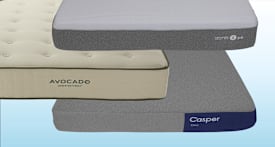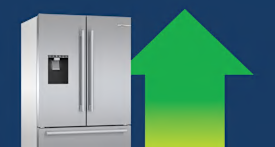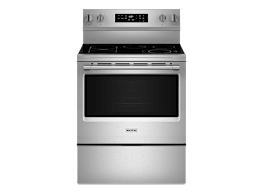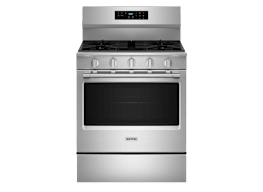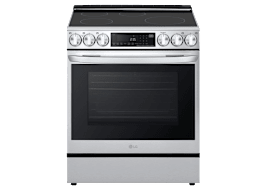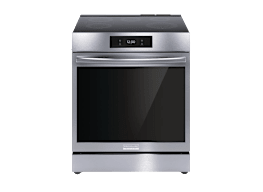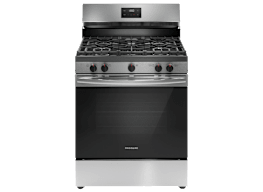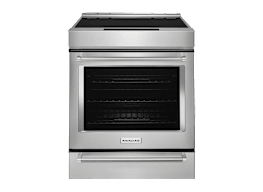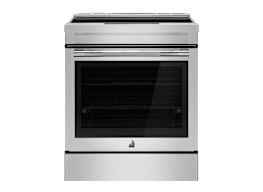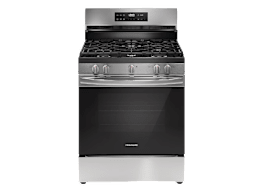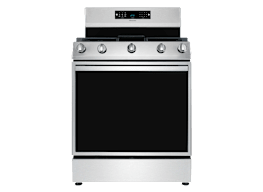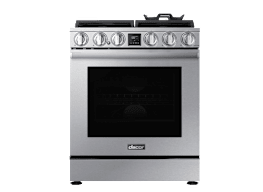Pros and Cons of Induction Cooktops and Ranges
These sleek models perform better than conventional stoves in CR's tests, but do they fit your cooking needs and budget?
When you shop through retailer links on our site, we may earn affiliate commissions. 100% of the fees we collect are used to support our nonprofit mission. Learn more.
Induction cooking appliances give you the best of both worlds: They blend the instant response time of gas with the easier cleanup (and environmental benefits) of electric appliances. Induction stoves also boil water faster than either alternative, and they’re safer too, because you can’t heat up a burner without a pan in place. Induction cooktops and induction ranges generally outperform every other kind of cooktop in Consumer Reports’ tests. In fact, nearly every model tested in our lab delivers fast cooktop heat and superb simmering.
- What Is Induction?
- Induction Ranges and Cooktops: Pros Cons
- Best Induction Ranges Cooktops
What’s more, if you buy a new induction cooktop or range, you may be eligible for financial incentives created by the Inflation Reduction Act.
While there are many benefits to cooking with induction, there also may be reasons to opt for a gas or electric model. Switching to induction can be expensive, and it can get even costlier if you don’t already have compatible cookware. Read on for more details on the benefits and drawbacks of induction cooking, and for some of our top picks of induction appliances.
What Is Induction?
Induction cooktops and induction ranges work by generating an electromagnetic field below the glass cooktop surface, which causes magnetic cookware sitting on top to heat up.
These cooktops and ranges look a lot like typical glass-top electric models. On most 30-inch induction cooktops, the magnetic field that causes cookware to heat up is concentrated into four spots (or elements).
As for the ovens in induction ranges, they broil and bake just as other electric ovens do, but their capabilities differ from model to model. High-end options might have features like built-in temperature probes, WiFi connectivity, and even in-oven cameras so that you can monitor whatever you’re baking with a smartphone. Less-expensive options will have many of the same features you’d find on regular electrics, like storage or warming drawers, adjustable racks, and a self-cleaning mode. Most induction ranges have convection ovens.
To learn more about induction, see our cooktop and range buying guides. Our ratings of induction cooktops and ranges highlight each appliance’s performance and specifications.
Induction Cooktops and Ranges: The Pros
There are plenty of things to love about induction ranges. Here’s how they compare with gas and conventional electric ranges.
They’re more environmentally friendly. Induction stoves are up to 10 percent more energy-efficient than conventional electric smoothtop stoves and about three times more efficient than gas stoves. And compared with gas, they’re better for indoor air quality.
@consumerreports When it comes to our tests, induction ranges are tough to beat. See ratings and reviews at CR.org/ranges. #kitchentok #kitchentiktok #cooktop
♬ original sound - Consumer Reports
Induction Cooktops and Ranges: The Cons
Before you shop for an induction cooktop or range, consider your budget and your cooking habits. Here’s what you need to know.
Induction cooking feels very different from cooking with gas. Some avid cooks really love cooking on a flame and the immediate visual feedback they get from it at the turn of a knob. No electric option, even induction, can replicate that feel. In fact, because the electromagnetic field on an induction cooktop doesn’t create a glow, you won’t even know it’s on. That’s why manufacturers have started adding virtual flames and other lighting cues.
It can get expensive when you convert from gas to electric. If you’re replacing an electric range, the swap is simple. Induction cooktops and ranges use the same 240v outlet as a standard electric range or cooktop. But if you’re switching from gas, expect to pay an electrician several hundred dollars or more to install the necessary outlet.
You need the right cookware. While most of the cookware in our ratings is induction-compatible, some pans—including those made of aluminum and anodized aluminum—won’t work on induction. Most others, including stainless steel and cast iron, will. If you’re shopping for cookware for induction cooktops, look for pots and pans marked “induction-compatible.” To determine whether your existing arsenal of cookware will work with an induction range, see whether a magnet strongly sticks to the bottom of your pots. If it does, they’ll work on an induction burner.
It might emit a sound. “A buzz or hum is common, and often louder at higher settings,” says Kenneth Sutton, who oversees the testing of ranges and cooktops at Consumer Reports. “And we often hear the clicking of element electronics at lower settings, as well as the sound of the cooling fan for the electronics.” Heavy flat-bottomed pans help reduce the vibrations that cause this buzz.
You may need an analog thermometer. The magnetic field of an induction cooktop can interfere with a digital meat thermometer.
Induction cooktops and ranges are typically more expensive than conventional electric models. But prices have continued to drop in recent years despite inflation. And buying a new induction cooktop or range may make you eligible for rebates, courtesy of the Inflation Reduction Act.
Best Induction Ranges
An induction range is best for kitchens with limited space because it packs a cooktop and oven into a single appliance. Here are two standout models from our ratings.




